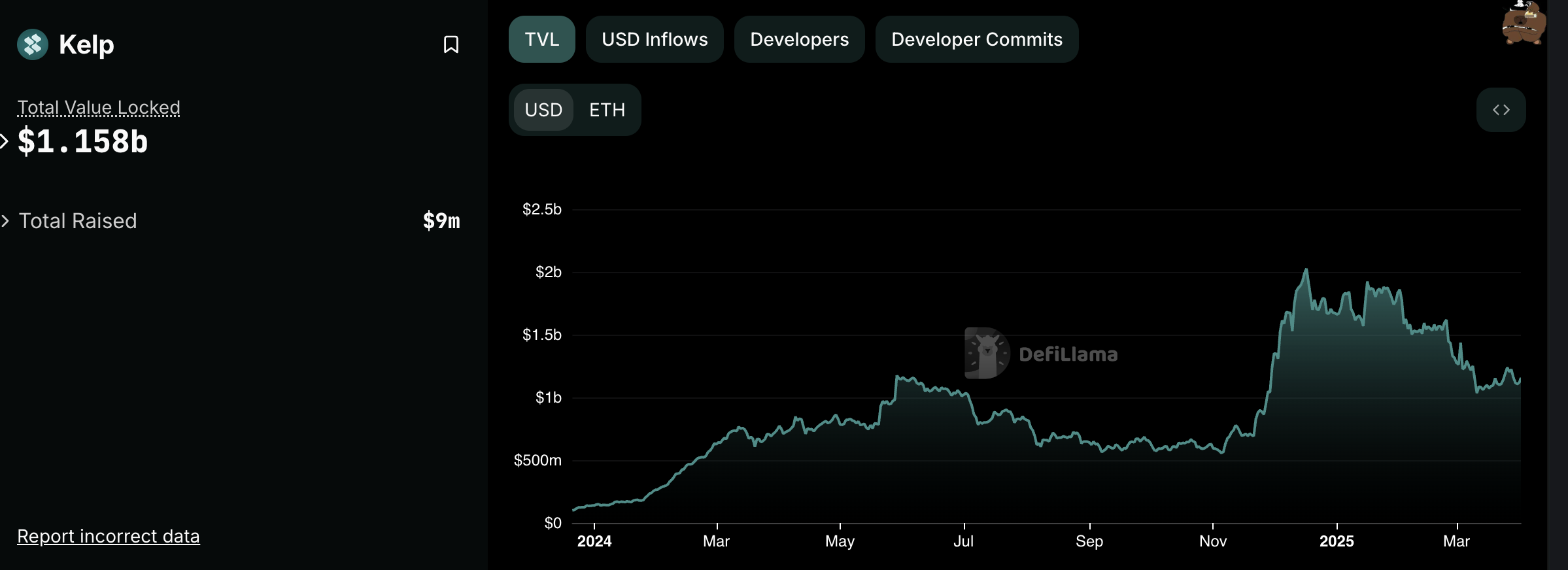| COINOTAG recommends • Exchange signup |
| 💹 Trade with pro tools |
| Fast execution, robust charts, clean risk controls. |
| 👉 Open account → |
| COINOTAG recommends • Exchange signup |
| 🚀 Smooth orders, clear control |
| Advanced order types and market depth in one view. |
| 👉 Create account → |
| COINOTAG recommends • Exchange signup |
| 📈 Clarity in volatile markets |
| Plan entries & exits, manage positions with discipline. |
| 👉 Sign up → |
| COINOTAG recommends • Exchange signup |
| ⚡ Speed, depth, reliability |
| Execute confidently when timing matters. |
| 👉 Open account → |
| COINOTAG recommends • Exchange signup |
| 🧭 A focused workflow for traders |
| Alerts, watchlists, and a repeatable process. |
| 👉 Get started → |
| COINOTAG recommends • Exchange signup |
| ✅ Data‑driven decisions |
| Focus on process—not noise. |
| 👉 Sign up → |
-
Binance Megadrop has launched KernelDAO, a revolutionary restaking protocol that supports Kernel, Kelp, and Gain tokens, set against an exciting 20-day airdrop event.
-
This innovative initiative allows users to maximize yield by repurposing staked assets, with Kelp currently managing over $2 billion in Total Value Locked (TVL) across multiple blockchains.
-
Binance has committed 40 million KERNEL tokens for the Megadrop, with trading pairs expected to commence shortly after the event concludes on Binance Spot.
Discover KernelDAO, the latest restaking protocol by Binance Megadrop, focusing on maximizing crypto yields through innovative asset repurposing with KERNEL tokens.
KernelDAO and Binance Megadrop: Overview
KernelDAO’s introduction as a restaking protocol is poised to transform how users engage with their staked assets. This innovative platform enables participants to repurpose their staked crypto, such as Ether (ETH) or Binance Coin (BNB), to earn higher returns across other decentralized finance networks, significantly maximizing yield.
The Megadrop event for KernelDAO is set to commence on April 1, 2025, lasting for an engaging 20 days during which participants can earn KERNEL tokens. Notably, Kelp, a vital part of the KernelDAO ecosystem, has registered an impressive Total Value Locked (TVL) of over $1.15 billion, demonstrating strong traction across ten blockchain platforms, including Ethereum and BNB Chain.

| COINOTAG recommends • Professional traders group |
| 💎 Join a professional trading community |
| Work with senior traders, research‑backed setups, and risk‑first frameworks. |
| 👉 Join the group → |
| COINOTAG recommends • Professional traders group |
| 📊 Transparent performance, real process |
| Spot strategies with documented months of triple‑digit runs during strong trends; futures plans use defined R:R and sizing. |
| 👉 Get access → |
| COINOTAG recommends • Professional traders group |
| 🧭 Research → Plan → Execute |
| Daily levels, watchlists, and post‑trade reviews to build consistency. |
| 👉 Join now → |
| COINOTAG recommends • Professional traders group |
| 🛡️ Risk comes first |
| Sizing methods, invalidation rules, and R‑multiples baked into every plan. |
| 👉 Start today → |
| COINOTAG recommends • Professional traders group |
| 🧠 Learn the “why” behind each trade |
| Live breakdowns, playbooks, and framework‑first education. |
| 👉 Join the group → |
| COINOTAG recommends • Professional traders group |
| 🚀 Insider • APEX • INNER CIRCLE |
| Choose the depth you need—tools, coaching, and member rooms. |
| 👉 Explore tiers → |
KernelDAO has issued a maximum supply of 10 billion KERNEL tokens, with Binance allocating a strategic 40 million tokens (4% of the total) for this inaugural airdrop. At its initial listing on Binance, 162,317,496 KERNEL tokens will be in circulation, representing 16.23% of the total supply, fostering a robust market introduction.
Post-event, KERNEL will be tradable on Binance Spot with key pairs such as KERNEL/BTC, KERNEL/USDT, and KERNEL/BNB, providing diverse trading opportunities for investors.
| COINOTAG recommends • Exchange signup |
| 📈 Clear interface, precise orders |
| Sharp entries & exits with actionable alerts. |
| 👉 Create free account → |
| COINOTAG recommends • Exchange signup |
| 🧠 Smarter tools. Better decisions. |
| Depth analytics and risk features in one view. |
| 👉 Sign up → |
| COINOTAG recommends • Exchange signup |
| 🎯 Take control of entries & exits |
| Set alerts, define stops, execute consistently. |
| 👉 Open account → |
| COINOTAG recommends • Exchange signup |
| 🛠️ From idea to execution |
| Turn setups into plans with practical order types. |
| 👉 Join now → |
| COINOTAG recommends • Exchange signup |
| 📋 Trade your plan |
| Watchlists and routing that support focus. |
| 👉 Get started → |
| COINOTAG recommends • Exchange signup |
| 📊 Precision without the noise |
| Data‑first workflows for active traders. |
| 👉 Sign up → |
This marks the fourth project rolled out on the Binance Megadrop platform, following the prior releases of Lista (LISTA) and Xai (XAI), with Binance Labs having previously invested in Kernel to construct recovery infrastructure on the BNB Chain.
Including KernelDAO could significantly elevate Binance’s influence within the restaking sector, which has seen remarkable growth. Recent statistics from DeFiLlama indicate that TVL among restaking protocols has recently topped $15 billion, with protocols like EigenLayer and Kelp pioneering this segment.
| COINOTAG recommends • Traders club |
| ⚡ Futures with discipline |
| Defined R:R, pre‑set invalidation, execution checklists. |
| 👉 Join the club → |
| COINOTAG recommends • Traders club |
| 🎯 Spot strategies that compound |
| Momentum & accumulation frameworks managed with clear risk. |
| 👉 Get access → |
| COINOTAG recommends • Traders club |
| 🏛️ APEX tier for serious traders |
| Deep dives, analyst Q&A, and accountability sprints. |
| 👉 Explore APEX → |
| COINOTAG recommends • Traders club |
| 📈 Real‑time market structure |
| Key levels, liquidity zones, and actionable context. |
| 👉 Join now → |
| COINOTAG recommends • Traders club |
| 🔔 Smart alerts, not noise |
| Context‑rich notifications tied to plans and risk—never hype. |
| 👉 Get access → |
| COINOTAG recommends • Traders club |
| 🤝 Peer review & coaching |
| Hands‑on feedback that sharpens execution and risk control. |
| 👉 Join the club → |
The distribution of 40 million KERNEL tokens during the Megadrop may lead to immediate selling pressure, as participants may opt to liquidate their airdropped tokens quickly. This potential wave of selling could exert downward pressure on KERNEL’s price. Moreover, KernelDAO will face stiff competition from emerging protocols like EigenLayer, which have established strong reputations in the market.
It’s also crucial to acknowledge that not all projects listed on Binance have consistently yielded positive performance. In 2024, a significant 29 out of 30 Binance-listed tokens encountered declines, raising questions about the sustainability and performance of newly launched projects.
Future Perspectives on KernelDAO
KernelDAO represents an important milestone in the evolution of decentralized finance and the restaking model. As the crypto market matures, the need for platforms that allow enhanced yield generation will persist. However, potential investors should conduct thorough research and remain cautious, considering the hard lessons learned from less successful listings in the past. The upcoming Megadrop could either solidify KernelDAO’s impressive potential or serve as a test of resilience in a rapidly changing landscape.
Conclusion
In summary, KernelDAO’s launch under Binance Megadrop signifies a pivotal moment for restaking protocols, with promising opportunities for yield generation. However, participants must remain vigilant regarding market dynamics and historical performance patterns witnessed in the crypto space. As this innovative protocol navigates its early phases, it will be fascinating to observe its trajectory and adaptation in the competitive DeFi space.
| COINOTAG recommends • Exchange signup |
| 📈 Clear control for futures |
| Sizing, stops, and scenario planning tools. |
| 👉 Open futures account → |
| COINOTAG recommends • Exchange signup |
| 🧩 Structure your futures trades |
| Define entries & exits with advanced orders. |
| 👉 Sign up → |
| COINOTAG recommends • Exchange signup |
| 🛡️ Control volatility |
| Automate alerts and manage positions with discipline. |
| 👉 Get started → |
| COINOTAG recommends • Exchange signup |
| ⚙️ Execution you can rely on |
| Fast routing and meaningful depth insights. |
| 👉 Create account → |
| COINOTAG recommends • Exchange signup |
| 📒 Plan. Execute. Review. |
| Frameworks for consistent decision‑making. |
| 👉 Join now → |
| COINOTAG recommends • Exchange signup |
| 🧩 Choose clarity over complexity |
| Actionable, pro‑grade tools—no fluff. |
| 👉 Open account → |
| COINOTAG recommends • Members‑only research |
| 📌 Curated setups, clearly explained |
| Entry, invalidation, targets, and R:R defined before execution. |
| 👉 Get access → |
| COINOTAG recommends • Members‑only research |
| 🧠 Data‑led decision making |
| Technical + flow + context synthesized into actionable plans. |
| 👉 Join now → |
| COINOTAG recommends • Members‑only research |
| 🧱 Consistency over hype |
| Repeatable rules, realistic expectations, and a calmer mindset. |
| 👉 Get access → |
| COINOTAG recommends • Members‑only research |
| 🕒 Patience is an edge |
| Wait for confirmation and manage risk with checklists. |
| 👉 Join now → |
| COINOTAG recommends • Members‑only research |
| 💼 Professional mentorship |
| Guidance from seasoned traders and structured feedback loops. |
| 👉 Get access → |
| COINOTAG recommends • Members‑only research |
| 🧮 Track • Review • Improve |
| Documented PnL tracking and post‑mortems to accelerate learning. |
| 👉 Join now → |








